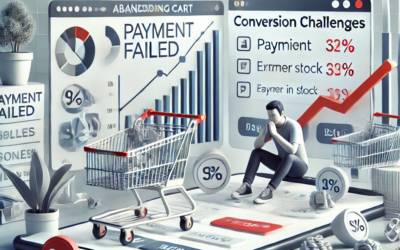Time-Saving Strategies: How Marketing Automation Reshapes Your Workflow
Time-Saving Strategies: How Marketing Automation Reshapes Your Workflow
Whatever job you’re doing currently, one thing is for sure – efficiency and precision are paramount.
Marketing tasks are getting more complex. There is a greater need for tools that make things easier and get better results.
Marketing automation can transform your workflow and improve your marketing efforts.
Did you know?
Around 63% of people who use marketing automation software expect to see benefits in six months.
Now, let’s explore the full story of marketing automation and how it can reshape your workflow.
Key Components of Marketing Automation
For starters, let’s elaborate on the topic.
Marketing automation is a multifaceted approach that involves various key components and tools.
If you scroll down, we’ll see how these components provide you with a comprehensive understanding of the foundations of a successful marketing automation strategy.
Email Campaign Automation
Email marketing is the soul of digital marketing and automating email campaigns can save marketers a significant amount of time and effort.
With marketing automation platforms, you can schedule and send emails to your subscribers at the most optimal times.
Furthermore, you can personalize these emails based on user behavior, demographics and preferences, making your email marketing more targeted and effective.
Social Media Scheduling Tools
In the era of social media dominance, keeping up with the constant demand for fresh content can be overwhelming. This is where social media scheduling tools come in.
They allow you to plan and schedule your posts in advance, ensuring a consistent online presence.
Whether you’re managing one social media account or several, automation streamlines the process, saving you precious time and helping you become famous on Instagram and other platforms.
Lead Scoring and Nurturing Systems
Identifying and prioritizing leads is a critical part of the marketing process. Marketing automation systems incorporate lead scoring and nurturing systems, enabling businesses to manage and convert leads efficiently.
Lead Scoring
Lead scoring implies assigning values or scores to leads based on their interactions and behaviors.
For instance, more than half of marketers allocate a significant portion of their budget, equivalent to or exceeding 50%, to lead generation efforts.
These scores help businesses identify and prioritize leads which have a higher likelihood of converting into customers. Here’s how it works:
- Behavior-Based Scoring: Automation systems track how leads interact with your content and website. Each action, such as visiting specific web pages, opening emails, or downloading resources, is assigned a score.
- Demographic Data: In addition to behavior, lead scoring considers demographic information. This can include factors like job title, industry, company size and location.
- Scoring Thresholds: You can set scoring thresholds to determine when a lead is considered “sales-ready.” Once a lead reaches a certain score, it’s passed to the sales team for further engagement.
- Customization: Lead scoring is highly customizable. You can adjust score values and criteria based on your business’s unique needs and sales processes.
Here’s another fact:
According to information pulled from SmartHQ, a majority of consumers, specifically 72%, express a stronger preference for messages tailored to their individual preferences
Lead Nurturing
Lead nurturing is a process that involves delivering targeted and relevant content to leads over time.
The goal is to guide those leads and build a relationship with them. Key aspects of lead nurturing include:
- Personalization: Automation systems allow businesses to create highly personalized lead-nurturing campaigns. By understanding a lead’s interests and behaviors, you can tailor content and offers to their specific needs.
- Drip Campaigns: These are a series of emails or messages sent to leads at predetermined intervals. These campaigns are designed to provide valuable information and keep leads engaged.
- Automated Follow-Ups: For leads who have shown interest but haven’t taken the desired action, automation systems can send automated follow-up emails. These reminders can encourage leads to move further down the sales funnel.
- Behavior-Triggered Content: Automation allows you to send content to leads based on their interactions. For example, if a lead shows interest in a product, you can automatically send them more information or even a special offer related to that product.
The Benefits of Implementing Marketing Automation
Now that we’ve thoroughly explored the key components of marketing automation, let’s examine the numerous advantages that come with automating marketing tasks.
These benefits are game-changers in the world of marketing.
Increasing ROI and Reducing Costs
One of the most significant advantages of marketing automation is its ability to boost return on investment (ROI) while simultaneously reducing costs.
With automation, you can run highly targeted and personalized campaigns without the need for extensive manual labor.
This lowers your marketing expenses. It’s a win-win situation that allows you to allocate your budget more effectively.
Achieving Consistency and Precision
Consistency is the ultimate key to building brand reputation and gaining customers’ trust. Marketing automation ensures that your messaging, branding and customer interactions are consistent across all channels.
It eliminates the risk of human error and the inconsistency that can result from manual tasks.
Your audience receives a uniform experience, which enhances brand perception and customer satisfaction.
Time-Saving Techniques with Marketing Automation
The true magic of marketing automation lies in its ability to save time and increase productivity. Let’s explore some specific strategies that help marketers harness the full potential of automation.
Segmenting and Targeting the Audience Automatically
Segmentation is crucial for delivering the right message to the right audience.
With the help of automation, you can segment your audience based on demographics, behavior and engagement history.
Automation tools can then send tailored messages to each segment, ensuring that your audience receives content that resonates with their interests and needs.
Trigger-Based Marketing Actions
Automated trigger-based marketing actions are like having a personal assistant for your campaigns.
You can set triggers for events, such as website visits, email opens, or product purchases. When a trigger is activated, the automation system responds with a predefined action.
This can include sending a follow-up email, adjusting lead scores, or notifying your sales team. It’s a hands-free way to ensure that your audience receives timely and relevant content.
Real-Time Analytics and Reports
Staying on top of your marketing performance is essential and marketing automation makes it easier than ever. With real-time analytics and reporting, you easily can track the performance of your campaigns.
This approach enables you to make informed decisions and adjustments on the fly, saving you time and ensuring that your strategies remain effective.
Common Pitfalls and Their Remedies
While marketing automation offers a multitude of benefits, it’s not without its challenges. Let’s address some common pitfalls and provide best practices to avoid them.
Over-Automation and Loss of Personal Touch
While marketing automation offers a multitude of benefits, it’s not without its challenges. One significant pitfall is over-automation, where an excessive reliance on automated processes can lead to a loss of the personal touch that customers value in their interactions with businesses.
To avoid this pitfall, it’s crucial to strike the right balance between automation and personalization.
The key to avoiding over-automation is striking the right balance between automation and personalization. While automation is excellent for streamlining repetitive tasks and saving time, it’s essential to identify the areas where a personal touch is crucial.
Divide your audience into segments that are based on behaviors and demographics. Automation can handle the delivery of content, but ensure that the content itself is tailored to the specific segment.
Even automated communications can be personalized. Use the data collected by your automation system to insert personal touches, such as addressing the recipient by their name or referencing their past interactions with your brand.
Identify touchpoints in your customer’s journey where human interaction is vital. Whether it’s a complex inquiry, a complaint, or a personalized follow-up, ensure that there are mechanisms in place for human engagement.
When you find the right balance, you can enjoy the efficiency benefits of automation while maintaining the personal touch that fosters strong customer relationships.
Neglecting Regular System Audits
While marketing automation offers a multitude of benefits, it’s not without its challenges. Neglecting regular system audits is one common pitfall that can lead to inefficiencies and missed opportunities.
As your marketing automation system evolves and becomes an integral part of your marketing workflow, it’s essential to conduct regular system audits. Neglecting system maintenance can lead to a range of issues, from data inaccuracies to workflow inefficiencies and compliance problems.
To avoid this pitfall, perform routine audits of your marketing automation system, covering various essential aspects:
- Data Quality: Ensure that your customer data is accurate and up to date. Incorrect or outdated data can lead to miscommunication and missed opportunities.
- Workflow Efficiency: Review your automation workflows to ensure they are running smoothly. Look for any bottlenecks or areas where processes can be streamlined.
- Compliance: Regularly check that your automated communications and campaigns comply with relevant regulations, such as GDPR or CAN-SPAM Act. Non-compliance can result in legal issues.
- Technology Updates: Keep your automation tools and software up to date. Technology evolves and updates may offer new features, enhanced security, and improved performance.
Marketing automation offers an array of benefits and with the right practices in place, you can enjoy its advantages while mitigating potential challenges.
Conclusion: Preparing for the Automated Marketing Future
In short, marketing automation changes how you work, making it faster and better.
When you use the right tools and strategies, you can benefit in many ways. These include increased ROI, lower costs, and precise audience targeting. When using automation, remember to be careful and regularly check and improve your system.
In digital marketing, you need to stay ahead in marketing automation to succeed. This will give you a big advantage in the future.
Embrace automation and watch your marketing workflow transform for the better


